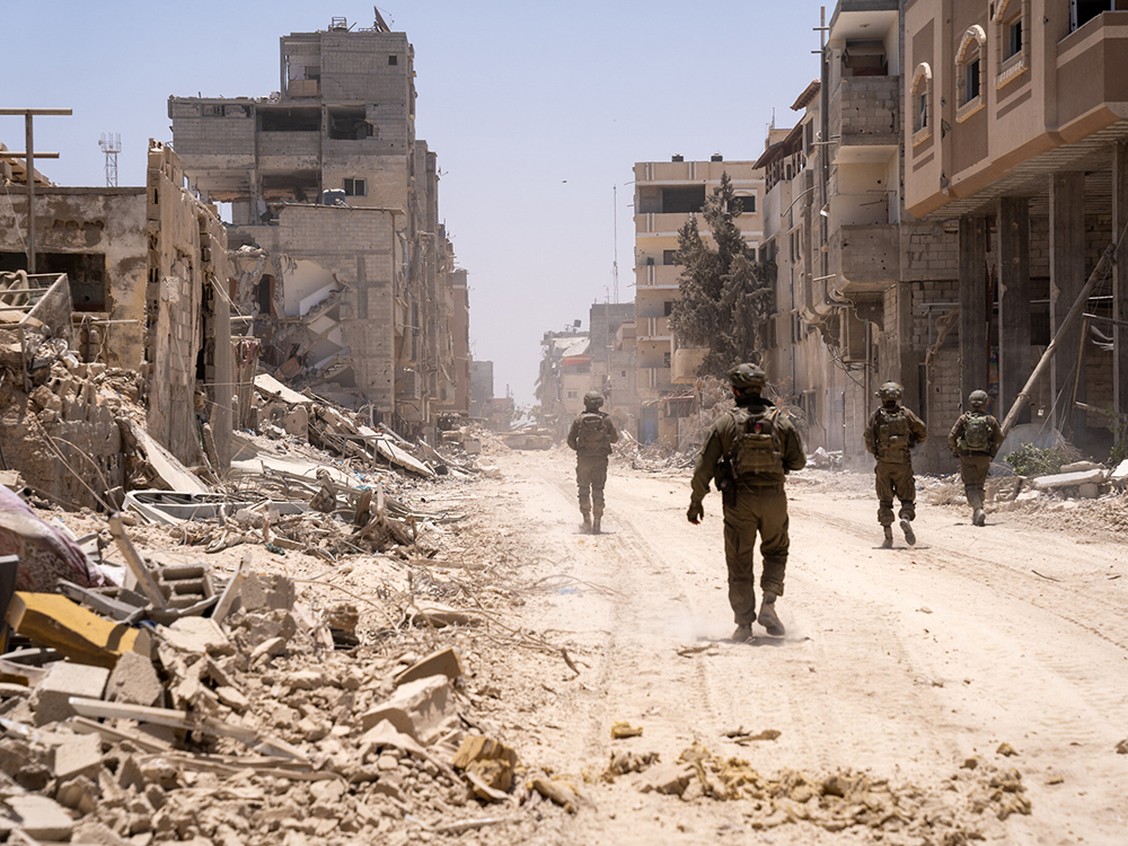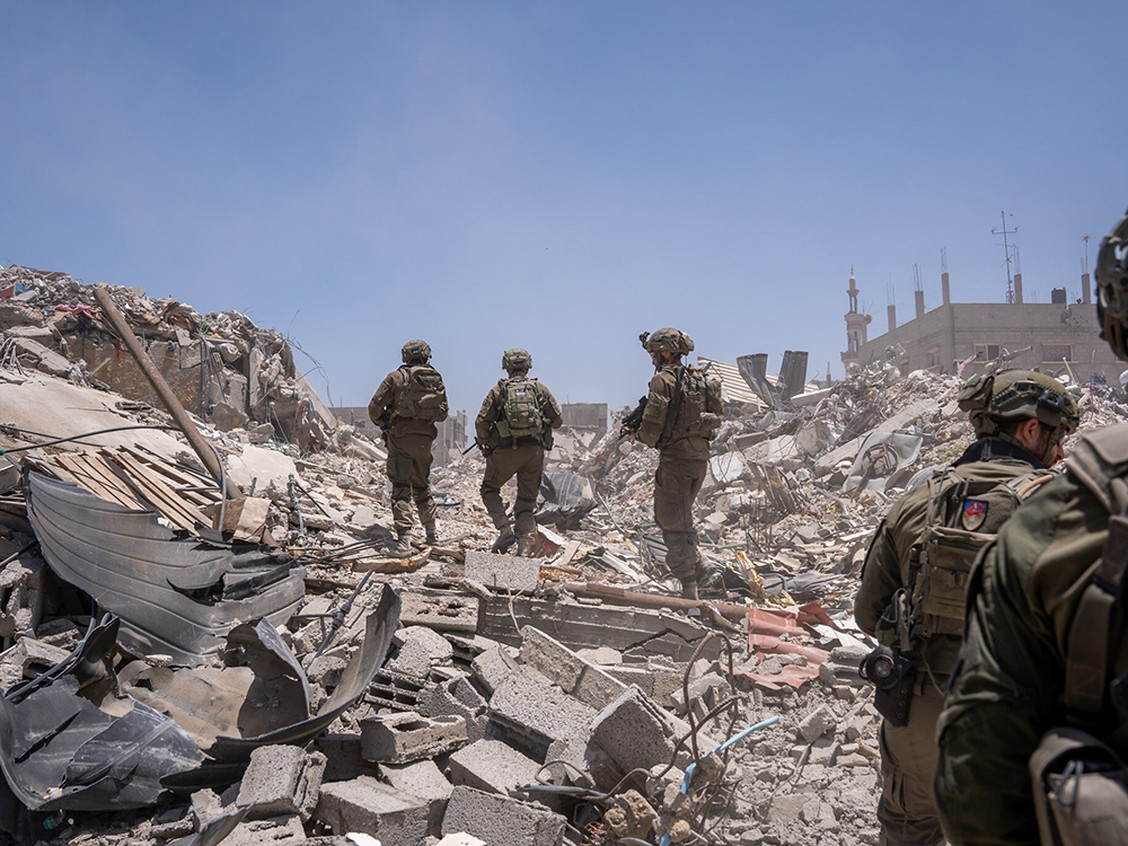It's The Tunnels, The Tunnels, The Tunnels...
"Hamas took an approach here where it avoided fighting with terrorists at the front, but instead chose to booby-trap [buildings]. And it booby-trapped loads of buildings. I haven't seen this many booby-trapped buildings before.""Our challenge is trying to locate them ahead of time.""The centre of gravity is the tunnels. If we don't [dismantle] the tunnels, it is very hard to control the area. You can be above ground operating freely, but [Hamas] can surprise you from underground.""In the end, if I want to hold the area properly, I need to reach underground, locate tunnel shafts, put explosives inside, destroy it, locate the next shaft, and demolish the whole network. This way, [Hamas] will have no choice but to either die inside [the tunnel] or to come outside. Above ground, I want them there, I have a major advantage there.""Not everything was the way we thought it would be. We found places where new routes were [dug]."Col. Liron Betito, commander, Givati Infantry Brigade
 |
In early May the Givati Infantry Brigade entered Rafah. With them were other troops from the 162nd Division. Betiti's brigade went forward to Gaza's key north-south road, Salah a-Din. The weeks that followed, the brigade made their way into the deeper reaches of Rafah in neighbourhoods where Hamas had its infrastructure built among the civilian population. A neighbourhood in central Rafah, Shaboura was slated for an offensive. Hamas appeared to have abandoned its posts.
Engagement at close quarters with Israeli forces failed to appeal to the Hamas operatives installed there.
Hamas, according to Betito, booby-trapped a vast number of Rafah homes. Its operatives linger in tunnels for Israeli soldiers to arrive. Car backup cameras, difficult to identify, trigger when troops arrive at booby-trapped buildings, when the explosives are then detonated. A week earlier five soldiers of the reconnaissance unit were killed when a booby-trapped home exploded, the building collapsing on them.
The Rafah Brigade which the Israel Defense Forces consider the least effective of brigades for Hamas were augmented by terror operatives fleeing from northern Gaza and other areas in the Strip where the IDF first operated, so it was advantaged by their arrival. The added manpower allowing it to prepare for the Israeli offensive in southern Gaza whose eventual arrival was anticipated with its goal of eliminating the remaining four Hamas battalions to complete its sweep of Gaza to eliminate Hamas.
The IDF assessed, as it initiated its Rafah operation, that a mere 2,000 terror operatives remained in the city, with the understanding that thousands had hurriedly departed, intermingled with civilians when the estimated 1.2 million civilians had evacuated to an Israeli-designated 'humanitarian zone', further north in the Strip. Many Hamas operatives eschewed their military uniforms in favour of the blending effect of wearing civilian clothing. Of those who remained the IDF amid the fighting listed hundreds of armed operatives dead, more believed to have died in buildings and tunnels hit by airstrikes.
The IDF command believes that about half of the Hamas fighting force in Rafah has been dismantled. Of four battalions in the Rafah Brigade, two have been almost dismantled; the remaining two thought to be 'somewhat' degraded in IDF operations. The likeliest indicator of a battalion's dismantling, according to Col. Betiti, is its tunnel infrastructure destruction. Nearly all the operatives for Hamas his troops had located and dispatched in Rafah were in hiding in tunnels whose entrances were mostly hidden within the booby-trapped buildings forcing Israeli forces' inspection.
So far along the Philadelphi Route reaching to the border with Egypt, 25 major tunnels were discovered, some which cross into Sinai, used to smuggle weapons. The entire 14-kilometre axis of underground smuggling routes has seen IDF combat engineers sweeping through, digging along the border. Freshly dug tunnels were encountered through operations in Rafah, aside from the major underground networks built over the past 15 years.
Hamas operatives had even burrowed a tunnel beneath an IDF Rafah encampment using a newly dug shaft to attempt the placement of an explosive device next to an armoured vehicle, surprising them with the group's efficient capacity to swiftly build new infrastructure. Nearly every building visible along a newly constructed route close to the Israeli border has been flattened by the IDF in its plans for a kilometre-long buffer zone.
 |
| Troops of the IDF’s Givati Brigade operate in the Yabna camp of southern Gaza’s Rafah, June 18, 2024. Photo by Emanuel Fabian /Times of Israel |
"I estimate that to [achieve] our next objective, which is to finish up Shaboura and Tel Sultan ... we want to demolish them entirely, it will take more or less a month, at this level of intensity.""Naturally, the place you reach last [in Gaza], is more prepared. It doesn't matter an extra week or two or a month. [Hamas] doesn't have tanks, armoured personnel carriers, or an airforce It's the same terrorists with the same anti-tank projectiles, the same tunnels.""We need to act smart, act with reason, protect our forces, but bring forth our power. It's only a matter of time."Col. Liron Betito
Labels: Dismantling Hamas Tunnel System, Israel Defense Forces, Rafah Invasion, Southern Gaza
0 Comments:
Post a Comment
<< Home